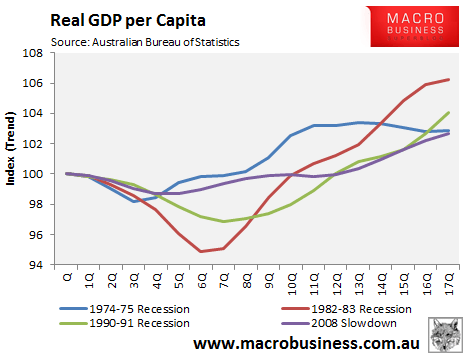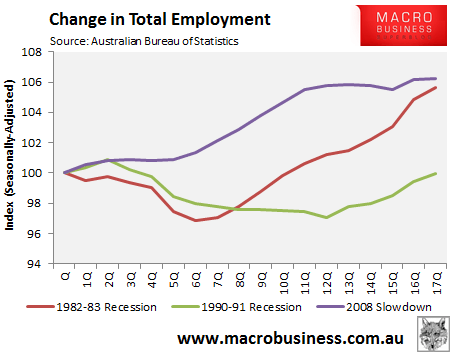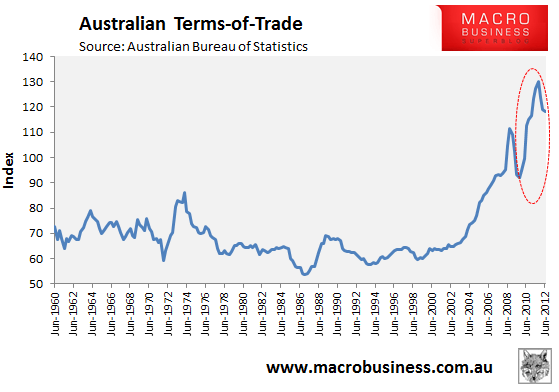
Tim Colebatch last week published an interesting article in The Age comparing the economic recovery following the 2008 slowdown versus the recessions of the 1970s, 1980s and the 1990s:
THE recession we didn’t have during the GFC is starting to hurt more than the earlier ones we did have. Official figures show the economy’s bottom line, GDP per head, has grown less since the start of the GFC than it had at the same stage of any of the past three recessions.
The Bureau of Statistics estimates that Australia’s GDP per head in the June quarter was only 2.7 per cent higher than its previous peak in March 2008, just before the GFC.
By contrast, at the same point after the onset of recessions in the ’70s, ’80s and ’90s, solid recoveries had already made good the recession’s losses, and lifted GDP per head higher above its previous peaks.
The figures, revealed in the national accounts, help explain why consumer and business confidence has remained so subdued, instead of unleashing the strong recovery that officials had forecast.
Essentially, while Australia’s GDP famously went through the GFC without a recession, and now stands 10 per cent above its pre-GFC peak, the accounts show most of that came from population growth.
By contrast, Australia did experience a recession in GDP per head. It began falling in the June quarter of 2008, and slid by 1.3 per cent over the next year, on the bureau’s smoothed trend measure. It then rose only slowly, and took three years just to get back to its 2008 level…
Colebatch’s analysis is spot on when only real GDP per capita is considered in isolation. As shown by the below chart, it took 12 quarters (March 2011) before GDP per capita recovered to its March 2008 level. And 17 quarters later (June 2012), GDP per capita is only 2.7% above the level in March 2008:

While the 2008 slowdown (recession in terms of real GDP per capita) was not as servere as the previous three episodes, the recovery has indeed been less swift, as shown clearly by the above chart.
However, it is wrong to suggest that Australians are worse-off this time around. Real per capita national disposable income (NDI) – a more useful measure of welfare – has grown strongly, as shown by the below chart (data unfortunately does not exist for the 1970s and 1980s recessions):

Moreover, jobs growth following the 2008 slowdown remained positive, far exceeding the previous episodes (again data is not available for the 1970s recession):

The key reason for the stronger income and jobs growth following the 2008 slowdown was the surge in the terms-of-trade, which significantly boosted incomes, company profits, government tax receipts, and spending:

There is a sting in the tale, however. With the mining boom now coming to an end, which is causing the terms-of-trade to unwind, Australia faces a period of slower per capita income growth as well as job losses. The slower economic recovery, as measured by per capita GDP, may soon also be reflected in real GNI per capita as well as the labour market.
Twitter: Leith van Onselen. Leith is the Chief Economist of Macro Investor, Australia’s independent investment newsletter covering trades, stocks, property and yield. Click for a free 21 day trial.

